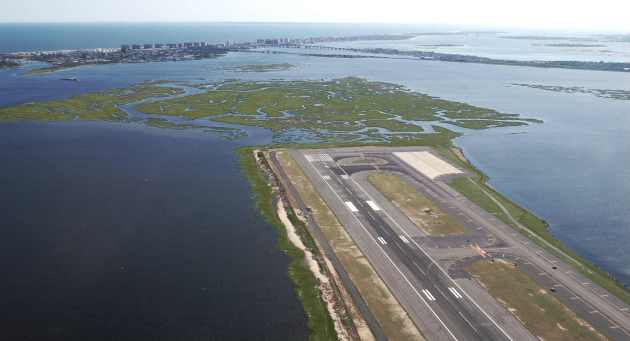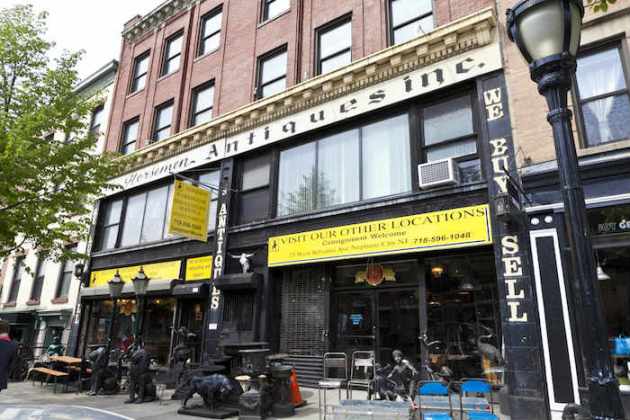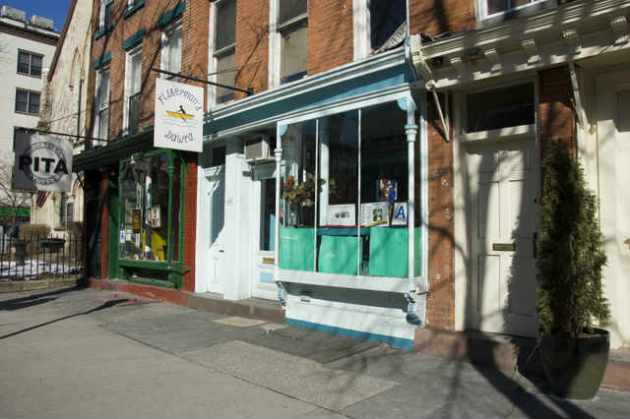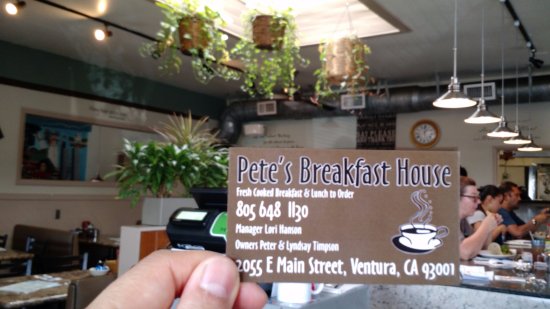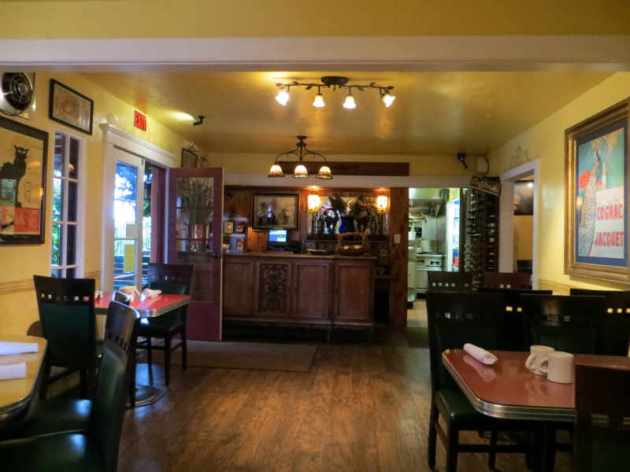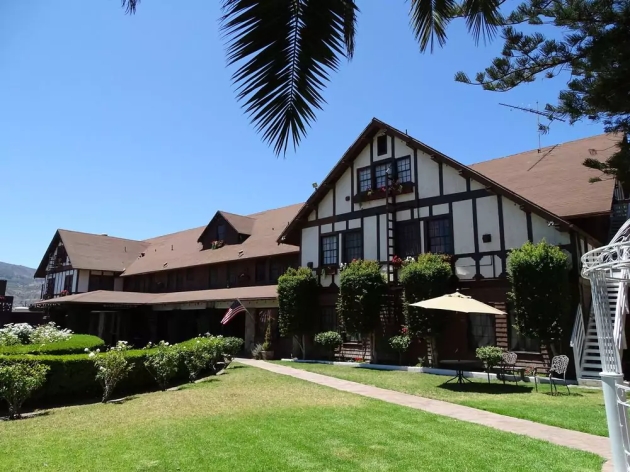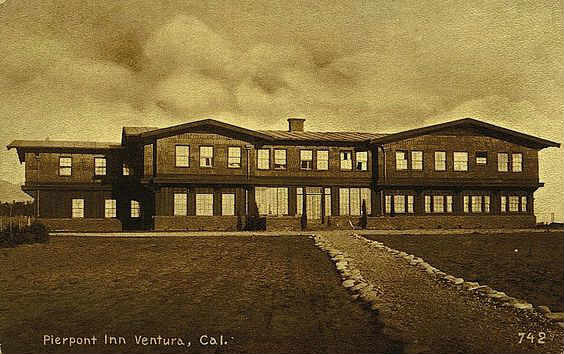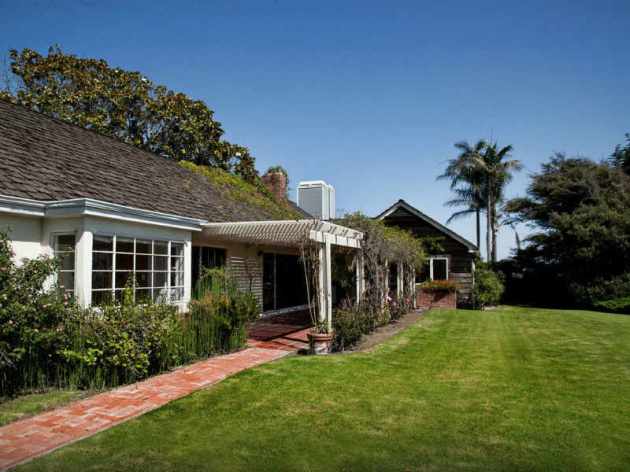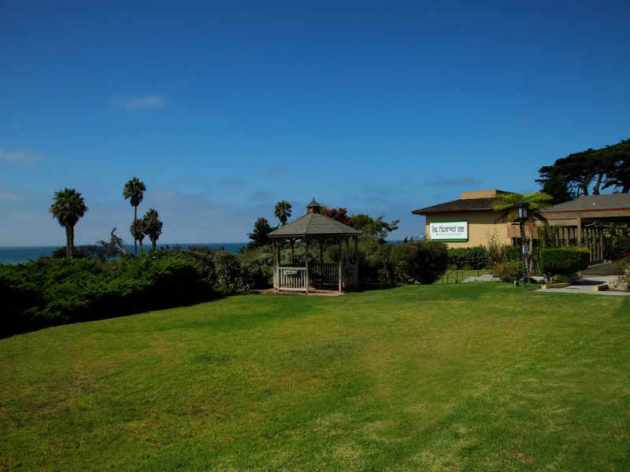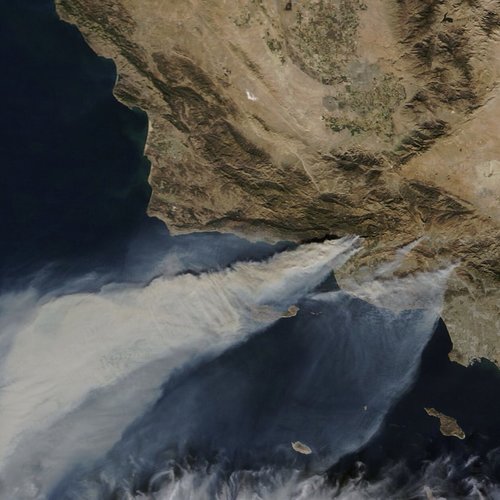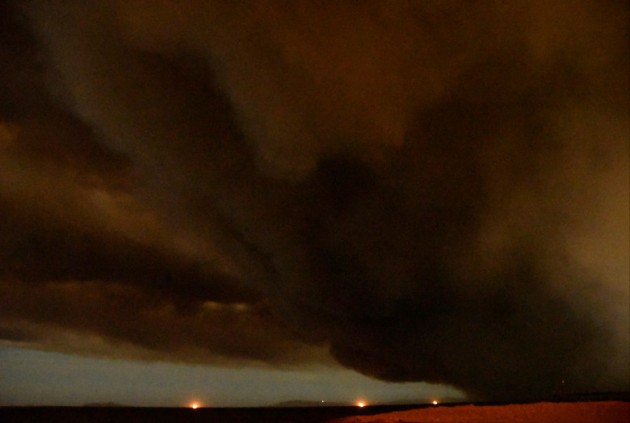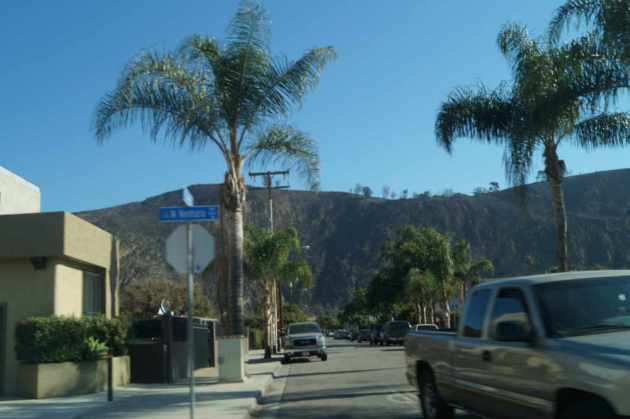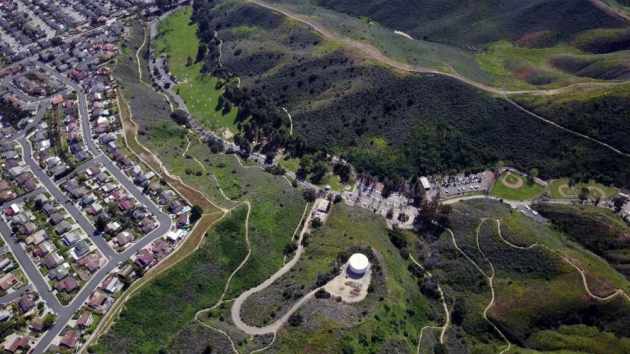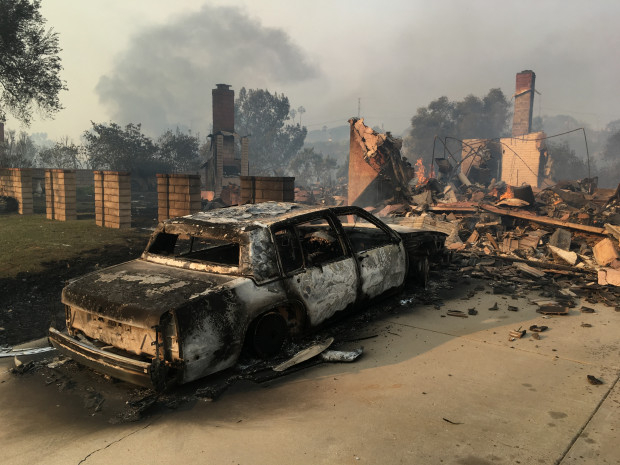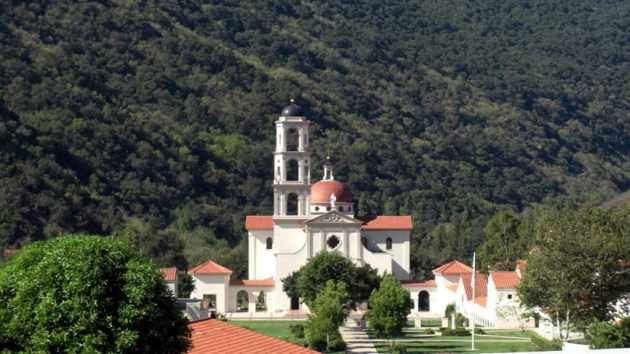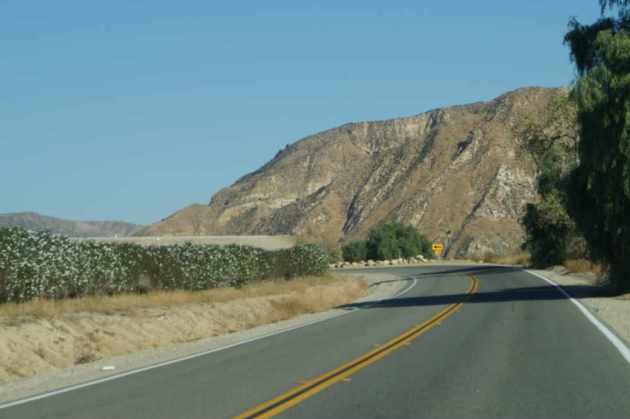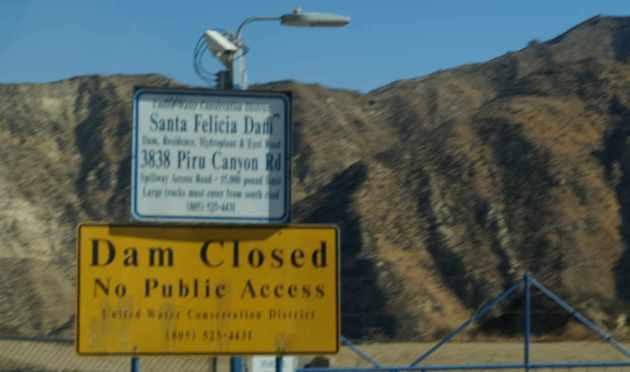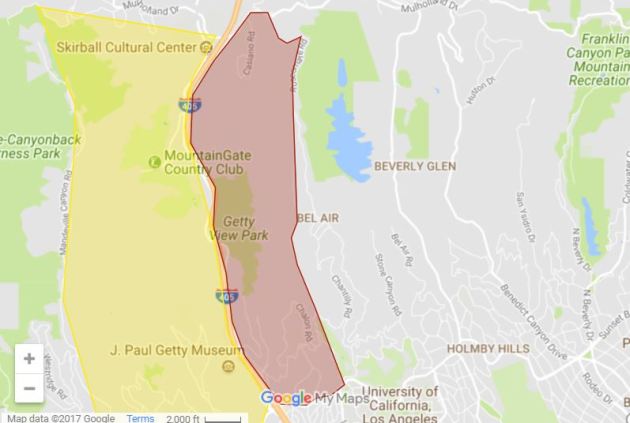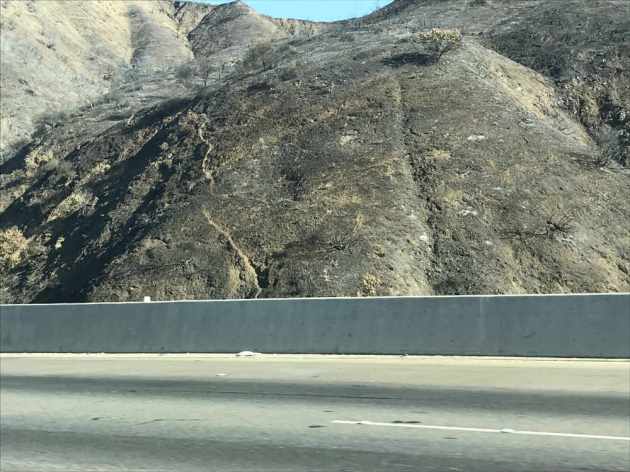
We decided to go north rather than west. West on the 101 is faster, but it’s all suburbs until you get to the Oxnard plain. The Santa Clara river, by contrast, is largely rural once you get off Interstate 5.
On the way, we noticed the cascades where Owens Valley River water comes into LA was shut off. It usually looks like this, just to the right of the northbound 405:

Not sure what it meant meant that there was no water running, but we continued our way north
The very name “Santa Clara” is confusing in California. In northern California, there’s the town of Santa Clara (St. Claire of Assisi…after all, California was colonized by Spanish Franciscans), which grew up around the Mission of Santa Clara, established in 1777. Santa Clara Valley is now better known as Silicon Valley, much of which is contained in Santa Clara County.
What does this have to do with Ventura? Well, although there are three creeks that drain through northern California’s Santa Clara Valley, none of them are named the Santa Clara River (if anybody’s interested, the three creeks are Tomas Aquinos (Thomas Aquinas), Saratoga Creek, and Calabazas (gourds or pumpkins, depending on context) Creek. There is a Santa Clara River, but that’s in Ventura County. (FWIW, the Santa Clara River was named first, in August of 1769, because the Portola expedition discovered it a couple of days before Saint Claire’s date of death in 1253).

The Santa Clara River is one of the less restricted rivers in California, and is the only southern California river that hasn’t been dammed, either for irrigation or flood control. Because most of the river valley is used for agriculture, there are relatively few levees, either. The result is a lovely river valley that runs 83 miles from the San Gabriel Mountains that divide Los Angeles from the Mojave Desert, and is responsible for the rich soil that constitutes the Oxnard Plain. In Los Angeles County, the river has been largely overtaken by suburbanization, pretty much all the way out to the Mojave Desert cities of Palmdale and Lancaster. California State Highway 126 is just above the Magic Mountain exit:

Magic Mountain is in the floodplain of the Santa Clara River. Most aerial pictures don’t show it clearly, but if you continue up the heights of Newall Ranch Road (the continuation of Route 126 on the LA/suburban side), you can get a view of the river and you realize, real fast, that Magic Mountain is built in the river’s floodplain. Probably will take a 100-year flood to wipe up it, but when you see it, there’s no question that a heavy rainy season will destroy the park. I haven’t found a good picture of Magic Mountain showing the topography, but perhaps you can get some idea from the following picture. The proclivity of southern Californias to build tens of thousands of homes below dams has to be seen to be believed, and will be the subject of a future post.

The river becomes rural almost immediately as you turn west. I have no doubt that LA County will eventually permit development up to the county line. Ventura County seems to have been more sensible and preserved its agriculture by appropriate zoning. The Ventura side reminds me a lot of the way that Riverside looked in the late 1950’s and early 1960’s.

There’s lots of citrus and avocados:

The valley isn’t terribly wide, and the river is always present. On the ground, the river is overgrown with trees, and looks something like this:
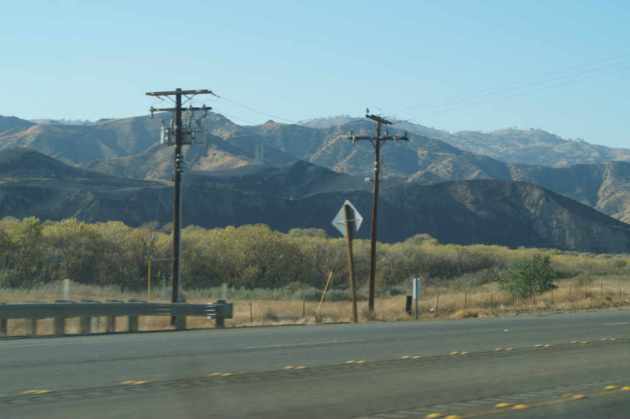
From the air, the width of the river is much more obvious. This aerial picture was taken at Piru, the community seen on the left of the photograph. Rancho Camulos, our first stop, was about 2 miles to the north.

Rancho Camulos is an 1,800 remnant of a Mexican land grant of nearly 50,000 acres taken from the lands belonging to the San Fernando Mission. Conveniently, those lands went to the majordomo who oversaw the secularization of Mission properties. Funny how that works out, isn’t it? It was reported to be the rancho upon which Helen Hunt Jackson based her 1884 novel Ramona. In fact, the owner exploited the Ramona myth by selling their citrus under the Ramona label, which appears at the top of this post. Postcards from around 1900 also advertised the rancho as the home of Ramona and Alessandro:

Whether the prototype of Ramona actually lived on the Rancho Camulos is, in the long run, irrelevant and a typical example of southern California boosterism. The facts quickly (and permanently) are subsumed by the myth and the promotional activities designed to develop land sales or product purchases. Here’s what the same part of the rancho looked like when we visited it:

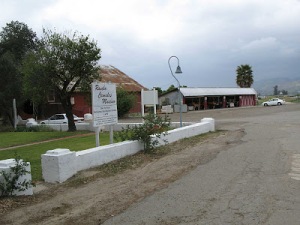 The rancho is a National Historic Landmark (supposedly the only one in Ventura County, but I haven’t been able to verify that) and has a fruit stand out front that we’d seen many times passing by. This time we stopped. The fruit stand was closed, as was the museum and park, but nothing was locked up, so we had pretty much full range of the place. The nuseum and grounds are officially open only on Sunday afternoons. For more information, see the museum website.
The rancho is a National Historic Landmark (supposedly the only one in Ventura County, but I haven’t been able to verify that) and has a fruit stand out front that we’d seen many times passing by. This time we stopped. The fruit stand was closed, as was the museum and park, but nothing was locked up, so we had pretty much full range of the place. The nuseum and grounds are officially open only on Sunday afternoons. For more information, see the museum website.
Thus far I don’t know a lot about its history. The rancho apparently shrank from 48,000 to its current 1,800 after the droughts of the 1860’s and 1870’s wiped out most of southern California’s famous cattle herds, something I want to research more, as it sounds like an instructive historical lesson. The del Valle family, which managed the ranch from the time their paterfamilias obtained in the grant in the 1840’s until they sold the ranch in 1923, quickly diversified into grapes, figs, citrus, and even made wine and brandy on the site. One of the buildings is the old winery and brandy distillery:

Many of the rancho’s buildings were seriously damaged in the 1994 Northridge earthquake, which is why the winery is surrounded by a cyclone fence and propped up.
 The grounds occupy about 40 acres. The historiography problem is that it’s a mishmash of different periods and styles. Unlike earlier adobes, the advent of the railroads and the development of the Pacific Coast lumber industry meant that lumber that was grown in northern California was generally available for construction by the time the adobe was built in the 1850’s instead of having to rely on the sparse local lumber. The houses therefore look a lot more modern, and it’s hard to determine when the different buildings were constructed.
The grounds occupy about 40 acres. The historiography problem is that it’s a mishmash of different periods and styles. Unlike earlier adobes, the advent of the railroads and the development of the Pacific Coast lumber industry meant that lumber that was grown in northern California was generally available for construction by the time the adobe was built in the 1850’s instead of having to rely on the sparse local lumber. The houses therefore look a lot more modern, and it’s hard to determine when the different buildings were constructed.
For example, the main house has three separate wings, shown on the map at the left. They don’t surround a courtyard, as would have been common during earlier adobe constructions. They’ve also been modified with such anachronisms as screening against insects, something surely unknown to the early Californios. As a result, the main house looks more like a modern-ish California ranch0-style house than an early Spanish adobe. The center no longer has a fountain or formal plantings, but rather a lawn and trees. The ranch house has three wings. Here’s the north:

Here’s the middle wing (note the screening):

And here’s the south, all complete with screening as well.

The other side of the south end is the basis for the postcard and orange labels of Rancho Camulo. Here’s a picture on the east end of the south end. Not exactly historical, but it’s always interesting to see the kind of carts that were used in the 18th and 19th centuries:
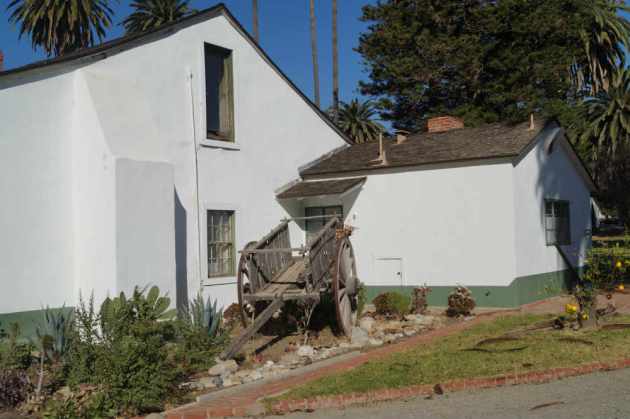
The ranch apparently was popular enough that the Southern Pacific Railway had a stop at Camulos where people could be fruits and nuts. THe station house still exists, although we didn’t realize it at the time, so we didn’t see it. Not much of a building ever, to judge from one of the rare historical photographs we have of the SP stop:
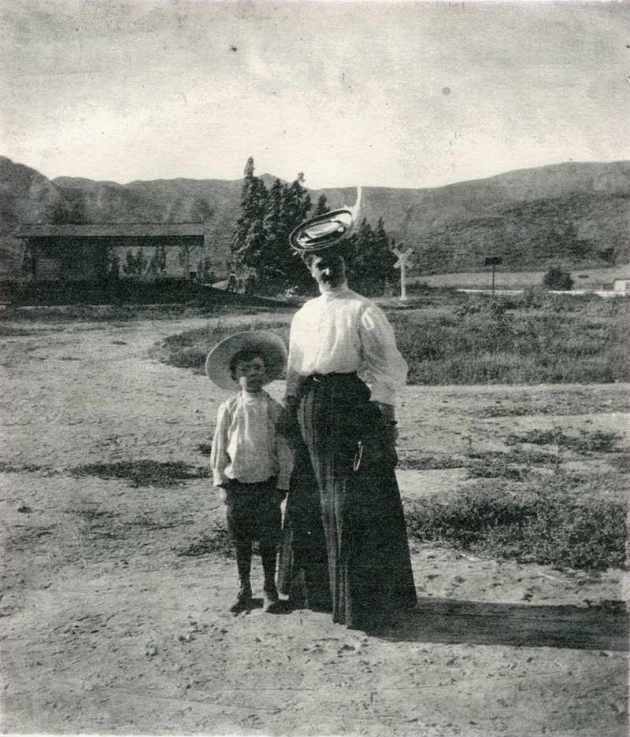
There are other oddities around the grounds that I haven’t entirely sorted out. Lots of weddings are held on the grounds but the chapel wasn’t built until the Rudel family bought the place in the 1920’s. It does have what looks like an old gas station….

….though whether gas was ever sold there isn’t clear, at least from walking around. The gas pump is a really old one, however:
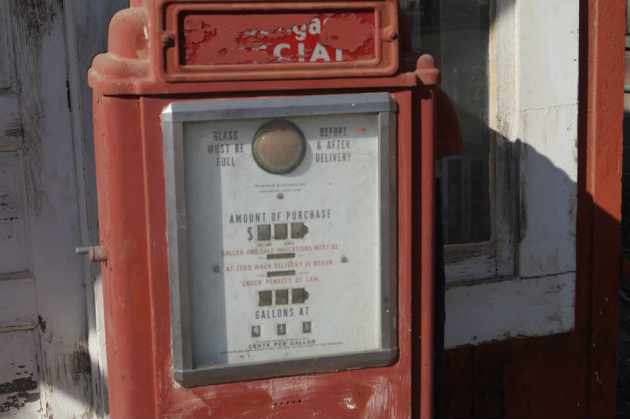
We will be going back in March to hear a talk on the St. Francis flood from 1928 that I wrote about last year. We hope to tour the museum and get a better handle on the history and development of the buildings than we could get from just walking around. I’m also hopeful we can see what’s north of Route 126 around the Southern Pacific station house. If you’re in the area on a Sunday afternoon, it’s definitely worth a visit.






